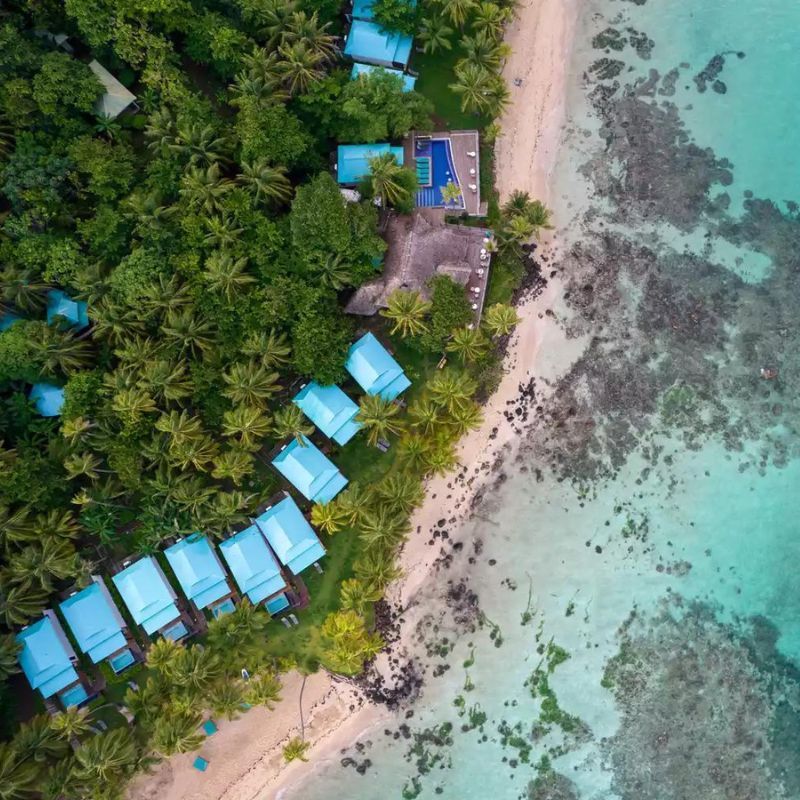
Most travellers embarking on a Cambodian adventure are lured by the iconic temples of Angkor in Siem Reap or perhaps the southern islands in the Gulf of Thailand. But, just 150 kilometres away from the bustling capital of Phnom Penh is a worthy detour to a charming riverside town, Kampot, which teems with history, culture and stories of resilience, and itself has a great side destination in beachside Kep.

Unlike its popular counterparts, Kampot city on the banks of the sleepy Praek Teuk Chhou River has shielded it from over-tourism. There’s a thriving community of innovative locals and expats running small businesses and revelling in life’s little joys, like quiet sundowners by the riverside. Life here is unhurried and ideal for the slow traveller.
A once-booming harbour

As you stroll Kampot’s streets, they whisper secrets of a bygone era. Kampot port was once Cambodia’s foremost harbour during the era of French rule between 1863 and 1949. Sihanoukville, further southwest, eventually overshadowed Kampot’s trading glory in the 50s, but it still retains traces of its gilded age.
The town’s historic architecture – like the National Bank and Provincial Museum – serves as a window to its colonial legacy and a great starting point to begin your Kampot tour. The Old French Bridge, affectionately called the Entanou Bridge, stands undeterred, symbolising Kampot’s resilience. If you visit Kampot, crossing this bridge is a rite of passage.
Kampot’s cinema culture

When Cambodia gained its independence from the French, the country prospered. The years between 1950 and 1970 are known as the Sankum Era. This was Kampot’s bustling golden age, and one of its significant artistic attractions was cinema culture. At its prime, Kampot boasted at least four theatres, uniting communities through art and transporting them to distant lands through the silver screen.

The Royal Cinema, built in 1951, played Indian films and cowboy westerns with Khmer dubbing. The Maison de Théâtre le Grandeur, built in the 1930s, and renamed as 7 Makara Cinema, specialised in Chinese martial arts films. But as the years rolled on, the brutal Khmer Rouge era under Pol Pot between 1975 and 1979, dealt a severe blow to these forms of entertainment, pushing them into decay and they never fully recovered their former glory.
While the Royal Cinema remains a dilapidated structure in the busy town centre, the 7 Makara Cinema, just a few metres down, stands proudly as the reimagined Hotel Old Cinema (doubles from USD54), a quirky hotel lovingly restored by a French couple. Among the many fascinating perks of staying at this Kampot boutique hotel is interacting with an employee who is the daughter of a projectionist at this former theatre.
Book your stay at Hotel Old Cinema via Booking.com
Book your stay at Hotel Old Cinema via Agoda.com
Land of durians, salt and pepper

Kampot is not just a town of history but a land of agricultural bounties. It is popularly known as the durian capital of Cambodia, as durians were grown in abundance here from the 1940s until the 70s, when Khmer Rouge replaced durian orchards with rice fields. In fact, so important is this fruit to Kampot that they have a giant durian statue on a roundabout in the heart of Kampot city functioning as a quirky landmark.

Kampot’s culinary allure extends to its world-famous Kampot pepper, granted a Geographical Indication (GI) status by the World Trade Organization. Small-scale farmers carry on the tradition of pepper harvesting through meticulous cultivation practices. Head 20 kilometres outside town to La Plantation, a pepper farm run by a French-Belgian couple that offers immersive farm tours and pepper-tasting.
And don’t miss the salt fields of Kampot! A sobering visit, two kilometres from the city centre on the other side of the river, you’ll see hard-working Cambodians harvesting pyramids of salt crystals from shallow waters under the fierce and unforgiving white-hot sun.
La Plantation: https://laplantation.com/en/; free guided tours are organised every day from 9 a.m. to 4 p.m. (the last tour at 4 p.m.); reservations not required.
A beach getaway

From Kampot, you can rent a scooter for a short ride to the nearby beach town of Kep, 45 minutes away. Kep Sur Mer (or, Kep on the Sea) was once a luxurious coastal getaway for the French and local elite who built expensive villas by the sea. However, Kep’s proximity to the Vietnam border made it prone to turmoil. For the communist Khmer Rouge, Kep stood for everything they despised, and the town was largely destroyed when they took control in 1975. Although Kep is slowly regaining its former prominence, the shadow of Pol Pot’s disastrous rule can be seen through many abandoned villas here.

Kep is also renowned for its crabs, freshly caught in the Gulf of Thailand. So significant are crabs to this town that as you enter Kep, you’re greeted by a giant crab sculpture in the sea. The Kep Crab Market has a series of makeshift stalls selling a bounty of various seafood catches. For a nominal sum, they’ll prepare your chosen fish right before your eyes. Must try: the town’s famous pepper crabs, of course! This local delicacy is the delicious union of Kep’s famous shellfish and Kampot’s legendary pepper. Waterfront shacks perched on stilts serve up the most delicious pepper crabs. Accompanied by a local brew and an awe-inspiring sunset painting the Gulf of Thailand, it’s a tastefully epic combination!
Kampot-Kep truly takes you on a Cambodian journey through time, culture, and cuisine, reminding you that the most remarkable adventures are often found in the quiet corners of the world.
Shop the best travel experiences here
Related: These Are Cambodia’s Best Hotels, Spas, Pools and More in 2023
Lede and hero image by Ali Chehade/iStock/Getty Images Plus.












